Glossy Reflectivity does not do what it says ?
- Using DS 4.15 latest public beta
- Shader: default ubershader
- Mode: PBR metallic / roughness mode with metallic set to 0.0
- According to the PBR concept the specularity/reflectivity of a surface is a function of the roughness (and IOR plus some more advanced ones).
Based on this asumption I was always confused that the ubershader offers a "Glossy Reflectivity" slider.
In my test it turned out that it indeed does not what it says. It seems to control the reflection strengh in relation to the viewing angle (I would expect this to be function of the IOR value instead).
If "Glossy Reflectivity" is higher then the facing reflectivity gets stronger and vice versa. But, in general it does not control the overall reflectivity of a surface. This remains a function of the roughness.

Glossy Canvas


---------------------



Any opinion, am I wrong here?
EDIT:
I also tried with various IOR values. But they don't have an effect regarding incident angle driven reflections. It seems the uber shader interprets PBR differently than I would have expected.
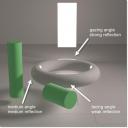

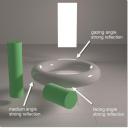

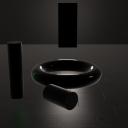

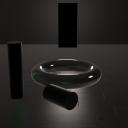

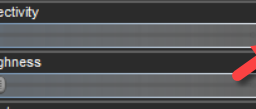

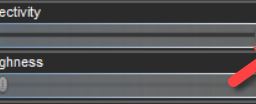

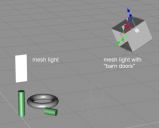



Comments
In 4.15 there is more than one mode of glossy reflection at the bottom of the shader tab stack. If it's not visible, unhide it and make your choice there. Maybe one of these will work better for you. I am not certain if this is in earlier versions of DS, but it very well may be - just hidden :)
"Glossy Reflectivity" is one of those sliders that I don't even touch, because confusing.
To control reflectivity and gloss, use "Glossy Layered Weight" and "Glossy Roughness".
I'm not using IRay so I don't know how that is implemented, but in my opinion it should be called by its right name which is glossy fresnel, or just fresnel. Calling it reflectivity is kind of misleading. And fresnel indeed plays an important part in a PBR workflow. The amount of fresnel should be controlled by the IoR value and not adjusted independently. Glossy fresnel roughness should be adjusted. For example metal or shiny dielectic materials (carpaint) should have a very low fresnel roughness while fabric should have a very high roughness.
These are different BRDF algorithms but do not change the general principle of diffuse/reflection. GGX Smith seems to be considered a standard because of a good reproduction of sharp specular highlights fall off. I tried those models but did not see much difference in test renders so far. But good tip for those who like to try them out.
I was confused as well but after those test its is clear now what it does. But I would definitely prefer to get an IOR value instead of this missleading parameter. Anyway, its time to dive into mdl. The more I use the uber shader the more I think it does a lot but not the best for a specific application.
How these values appear in a render depends to a huge extent on your scene lighting. I just spent two hours trying to get a skin to look sweaty in a darkish scene lit by a Ghost Light. Even with relectivity, GLW and DLSW maxed out the skin looked barely wet. Could only do it with a geoshell in the end. If this was outdoors with an HDDRI or with a different light sourse this guy would be shining like a mirror.
It's always seemed to me that all the glossy settings work exactly as I would expect. Glossy Reflectivity controls exactly what it says. With it set to 0, glossiness color is controlled by the Glossiness Color attribute as one would expect. It's not real PBR glossiness, but rather a computationally cheap aproximation that happens to be usefull for effect. With the Glossy Reflectivity at Full or 100, all glossy highlights will reflect the colors around them. I've found that its effect is subtle unless both dual lobe and top coat are turned off, since they both reflect the environment and basically cover up the "Glossiness".
Don't foorget that because ghost lights are almost invisible they will not be reflected in shiny surfaces. If you want nice specular effects you need visible lights, or bright objects.